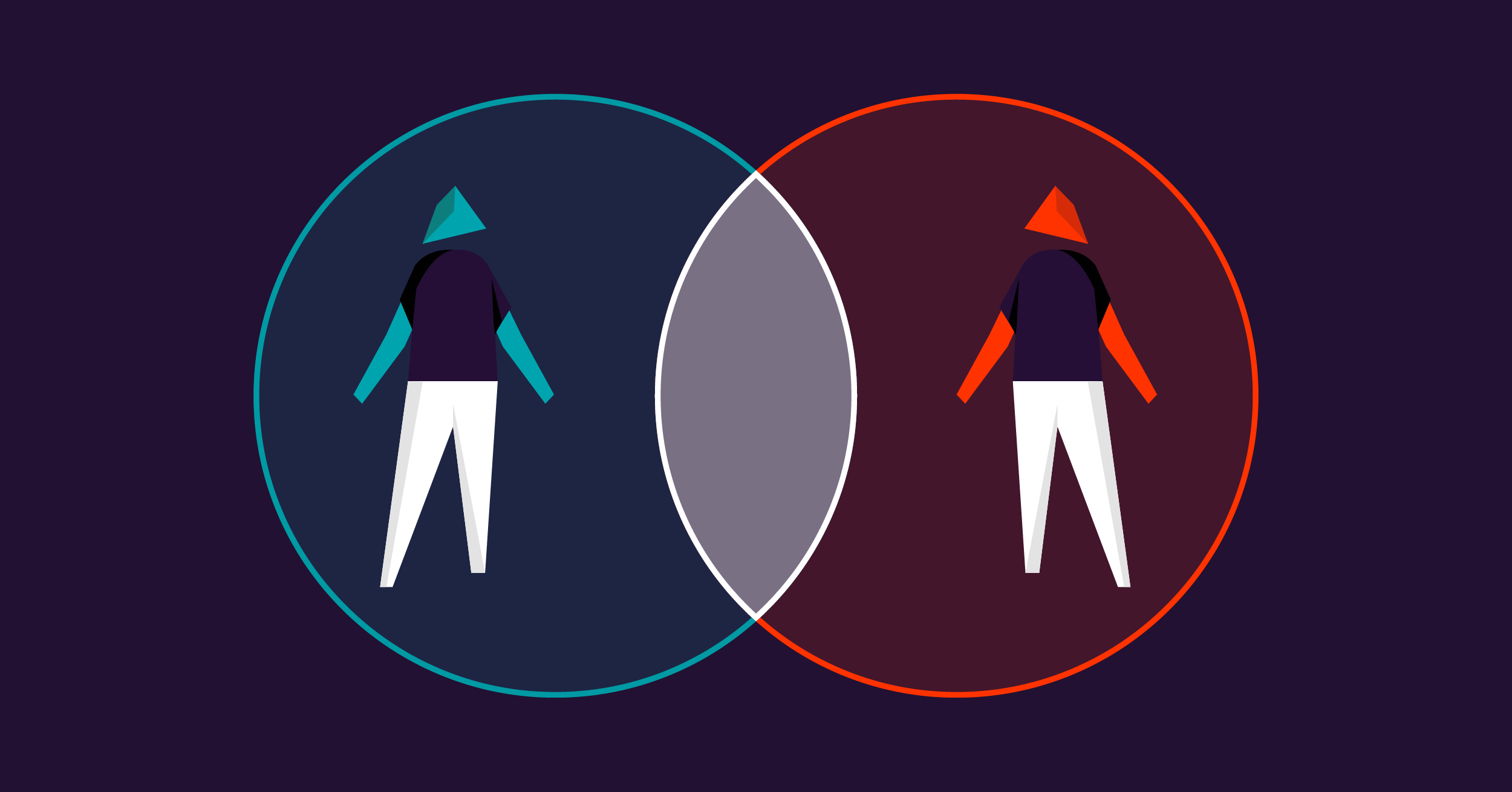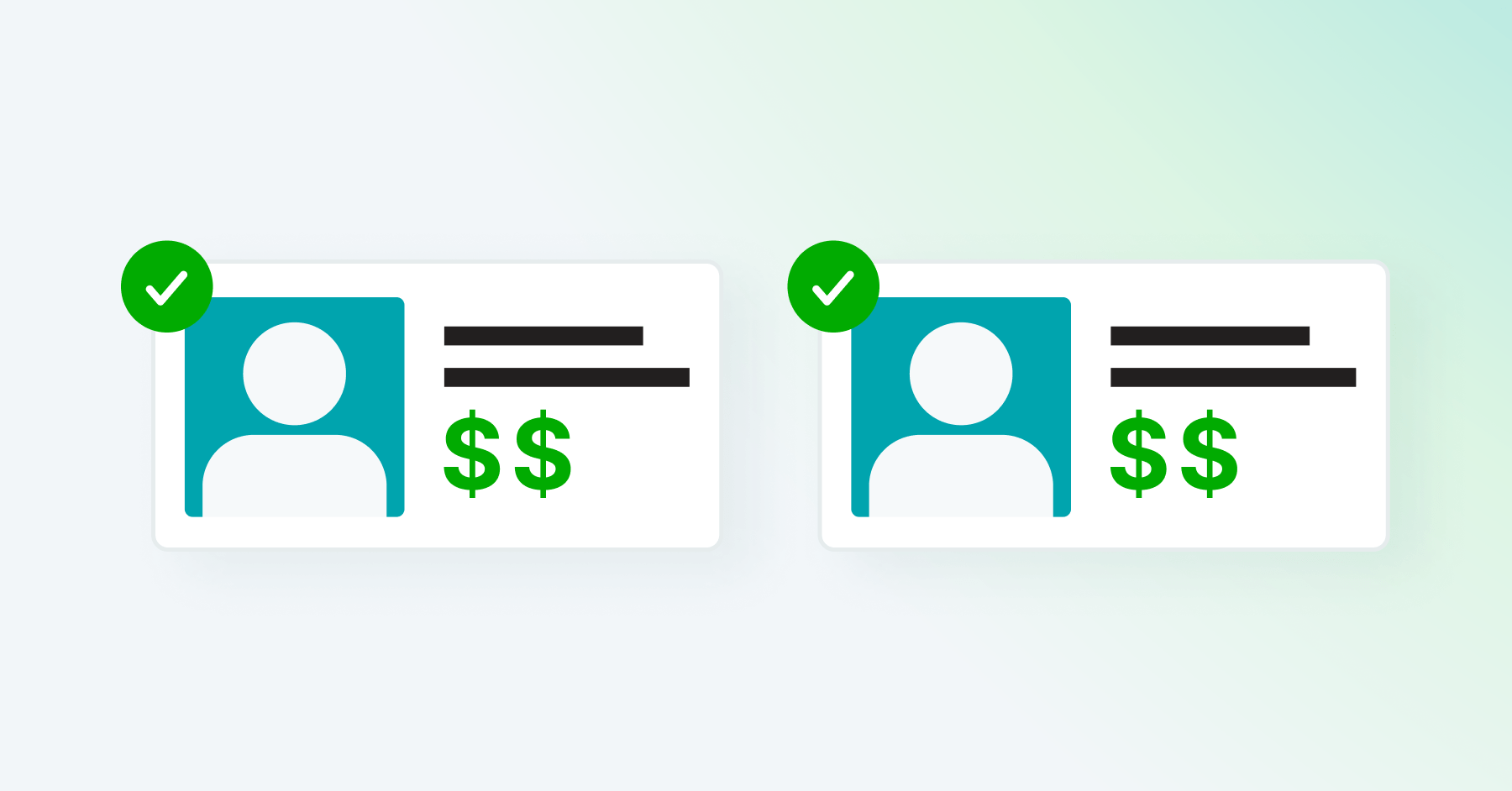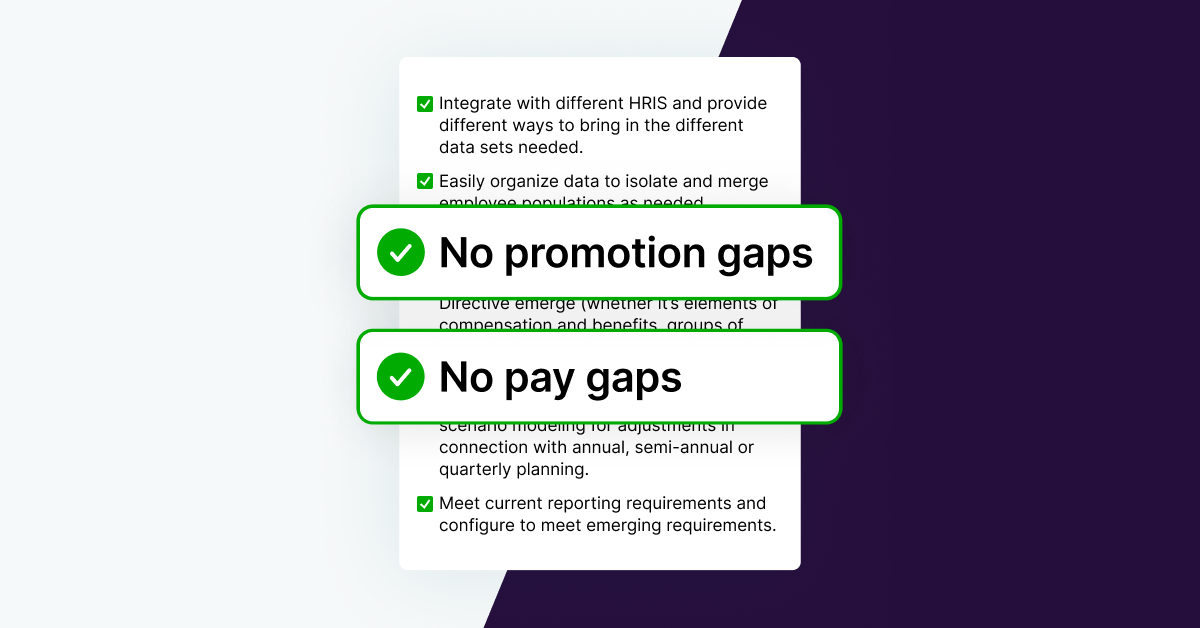Identity is complex, multi-faceted, and layered. When it comes to workplace equity analyses, the language, labels, and groupings that we apply to employees in the workplace for the sake of analyzing potential differences in employment outcomes (like pay or promotions) for similarly situated groups are reductive by nature and can never capture the full spectrum of how individuals uniquely experience the workplace. However, by applying an additional lens of intersectionality to workplace equity analyses, organizations can dig a little deeper to gain a more nuanced understanding of how multiple aspects of employee identity overlap to impact equitable outcomes in areas such as pay, representation, promotions, and hiring.
Below we explain the concept of intersectionality in the workplace and how companies are applying it to their workplace equity analyses.
What is intersectionality?
Intersectionality is the concept that each facet of a person’s identity (such as gender, race, LGBTQ+ identity, age, disability, etc.) can compound or diminish experiences of discrimination or privilege as it overlaps with other aspects of their identity within different contexts. For example, Black women experience the workplace differently and can face different (and often compounded) discrimination and inequities than those faced by women as a group or Black workers as a group.
The history of intersectionality
The term “intersectionality” was coined by civil rights scholar and advocate Kimberlé Crenshaw in 1989. In her seminal article, she covers a 1976 case which alleged discrimination against Black women workers specifically, in ways that did not apply to women or Black workers as broader groups. Crenshaw was critical of the outcome in which the court denied that Black women could make a claim as Black women (rather than on the basis of being a woman or a Black worker, separately), deciding that the intersection of two protected classes did not create a new class.
Why does intersectionality matter in the workplace?
When it comes to pay gaps, only looking at race or gender separately may overlook nuances of inequities within groups. For example, in the U.S., the pay gap for women as a group (working full-time, year-round) is 84 cents for every dollar paid to white, non-Hispanic men. The pay gap for Black workers as a group is 80 cents. However, for Black women, the pay gap stands at 63 cents.
The compounding disparities faced by Black women due to the intersections of inequity is sometimes called the “double gap.” Other women of color also face a double gap: For example, the pay gap stands at 55 cents for Latina women and 57 cents for Native American women.
“When I get on stage, I’m a Black woman. And I’m a Black C.E.O. Being a C.E.O. in general can be lonely sometimes. As one of the few Black female C.E.O.s, the loneliness builds.”
Stacy Brown-Philpot, former CEO of TaskRabbit | The New York Times
| Related content: Check out our episode of The Shift podcast with Stacy Brown-Philpot, “Turn the Promise of DE&I into Real Action.” |
Opportunity gaps also disproportionately impact women of color. Black and Latina women face the largest opportunity gaps in the U.S, meaning Black and Latina women are the most underrepresented in both leadership and management positions relative to their proportion of the private sector labor force. Black women are 8.3% of the workforce represented in EEO-1 data, but only 4.0% of managers and 1.8% of executives. Latina women are 7.5% of the workforce but 3.8% of managers and 1.7% of executives. Additionally, during the COVID-19 pandemic, Black and Latina women left the labor force at higher rates than any other group, primarily due to caregiving responsibilities.
Other aspects of identity can also compound inequities in the workplace. According to NPR, LGBTQ+ people of color are more than twice as likely as white LGBTQ+ workers to say they’ve been discriminated against because they are LGBTQ+ when applying for jobs. Black LGBTQ+ workers are more likely to report that discrimination has affected their ability to retain employment and more likely to make specific decisions about where to work to avoid discrimination than white LGBTQ+ workers. Black transgender people have an unemployment rate two times higher than the overall rate for transgender people and four times higher than the rate of the general population.
People with disabilities, regardless of their gender, race, ethnicity, age, or LGBTQ+ status, experience lower employment rates than people without a disability. However, due to intersections of inequity, people with at least one disability who are also part of another marginalized group face more acute employment gaps. Black workers with disabilities have the lowest employment rate among all racial/ethnic groups. Additionally, within each demographic, workers with disabilities have the worst employment outcomes, showing that disability compounds every other labor market inequality.
Applying an intersectional lens to workplace equity analyses
“Because the intersectional experience is greater than the sum of racism and sexism, any analysis that does not take intersectionality into account cannot sufficiently address the particular manner in which Black women are subordinated.”
Kimberlé Crenshaw | Demarginalizing the Intersection of Race and Sex
Intersectional analyses can help paint a more complete and nuanced picture of inequity within a company, as they are less reductive than broader categorical analyses. Companies are starting to recognize the importance of applying an intersectional lens to workplace equity analyses. Syndio’s 2023 Workplace Equity Trends Report found that companies in the U.S. are increasingly conducting intersectional analyses of race and gender in addition to analyzing each separately. Our survey found that:
- 52% organizations’ pay equity analyses now include intersections of gender and race
- 38% of companies are conducting intersectional analyses for some form of workplace equity analyses
When building Syndio’s Workplace Equity Analytics Platform, we made sure to allow the tracking and comparison of specific, intersectional groups. Though an intersectional lens is definitely a best practice, there are two potential downsides when adding intersectional comparisons into your workplace equity analyses to keep in mind.
First, by nature you’ll be slicing your data more and more finely, which means your sample sizes are going to drop. This may mean that certain statistical tests you would want to perform may no longer be possible. Even when you can perform these tests, their statistical power drops with falling sample sizes, so drilling down may cause you to “lose sight of the forest for the trees.”
The second tension is that if disadvantage is spread across multiple communities, analyzing and remediating at the broader level is the right approach. There is no way to know ahead of time the level at which disadvantage may be playing out in your organization. The key to addressing these potential downsides to deep intersectional analyses is to conduct your analyses at multiple levels simultaneously — work that our platform can help you perform at scale.
Intersectional analyses benefit all workers
“Inclusion from the margin: creating systems that include the most marginalized and those identifying with multiple marginalized groups is the fastest way to include all.”
Ludmila Ph.D., SHRM-SCP, Professor at Vanguard University of Southern California | Harvard Business Review
While intersectionality is a lens for understanding a system of compounding disadvantages, it also provides solutions that can benefit everyone in the workplace. Companies that take action to correct inequities and remove barriers for the most marginalized, vulnerable, and underrepresented intersectional groups of employees in their workforce will improve equitable outcomes and accessibility for entire cross-sections of their workforce.
To learn other ways that leading companies are expanding the definition of diversity in their workplace equity analyses, check out the 2023 Workplace Equity Trends Report at the link below.
The information provided herein does not, and is not intended to, constitute legal advice. All information, content, and materials are provided for general informational purposes only. The links to third-party or government websites are offered for the convenience of the reader; Syndio is not responsible for the contents on linked pages.



